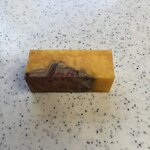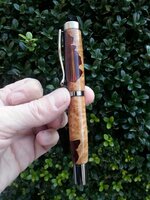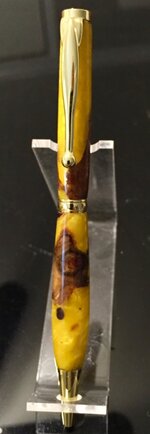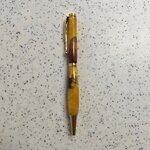Warren White
Member
I have a blank that appears to me to be part acrylic and part wood. (Picture below)
I don't know where I got it, but more importantly, I don't know how to finish it. If it is wood, I use CA. If it is acrylic, I go through the MM sanding. What the heck do I do if it is (as it appears to me) a hybrid?
Your help is, as always, most appreciated!
I don't know where I got it, but more importantly, I don't know how to finish it. If it is wood, I use CA. If it is acrylic, I go through the MM sanding. What the heck do I do if it is (as it appears to me) a hybrid?
Your help is, as always, most appreciated!




